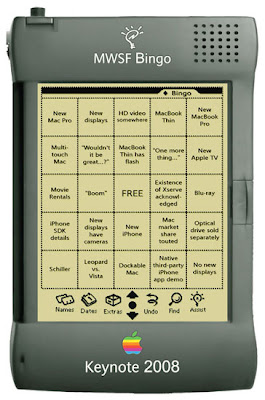 Have you been considering replacing your old 20GB hard drive in your Powerbook? You might want to think twice... or three times.
Have you been considering replacing your old 20GB hard drive in your Powerbook? You might want to think twice... or three times.One thing you may have not considered when you went out to buy your aluminum Powerbook G4 with its ample 20GB of hard storage and huge 256 MB of RAM (which if you were smart you immediately upgraded to at least 512 MB so you'd never have to upgrade again) is that it would not be enough space for all your digital life in 2008.
In fact, if you have a handy program like Whatsize from ID-Design, you will find that if you have a digital camera or a iPod that needs to be fed, massive amounts of your storage is taken up in your iPhoto and iTunes folders with digital images and songs. For the average user who have embraced the digital worlds of music, video, podcasting, and photography, these will be the biggest space eating culprits. In a very short period of time you will find 20, 30, 40 and even 60 GB of storage space an impossible space restriction to your wildly expressive urges.
My good friend "Buy a Mac" Mike has an expression, "...hard drives are like home car garages, no matter how much space you have, you'll always fill it up..." Mike says this to encourage organization, thrift and off-loading to backup archives. And as a warning when entering his garage.
I hear ya bro, and I have lots and lots of firewire storage devices that archives tons of old files, images and media. I also have a 500 GB hard drive connected to my Airport hub for off loading current working content. But truth be told, in order for your laptop to have the effective amounts of data to do tasks like update the blog, load digital images into iPhoto, feed the iPod music and movies, sync with .Mac... I could go on and on, you must have a baseline amount of storage space to stay alive.
And then there is another aspect no amount of connected, networked and archival storage can help with: With Apple upgrading the operating system every 6 months and new applications taking up considerably more space, you do not have enough storage AND platter space just for your necessary applications. Apple's new operating system Leopard wants 12 GB and then add to that iLife, iWorks and.or Office 2008 for the Mac and you're screwed.
Okay, so you made the decision that you don't have enough space on your laptop OR life made that decision for you. What do you do about it?
Friends say, especially around tax return time, buy a new Mac! Bigger, better, faster, newer, smaller, thinner, a new operating system... blah, blah, blah... That urge is tempting I must say. Love the packaging and holding in my hands the newly manufactured Apple product for 2008 but... a $3,000 thin Mac with 64GB hard drive. No Way! A 64 GB or 80GB hard drive is just the problem I am trying to get away from, not buy into. In today's market, new computers must have >100 GB of hard or solid state storage. Easily, many of the off-the-shelf computers will be weighing in a 1/2 terabyte of storage or 500GB.
The prospect of a hard drive upgrade to the Powerbook is a sane and reasonable alternative. So what then? Take it to the Apple Store talk it over with the Apple Genius and get a new drive replacement? Not. Unless you like to throw your money away and pay Apple a ridiculous four times more than you need to pay, stay away from Apple Store for this type of computer expenditure. You can always go back and get sucked into their vortex for other types of purchases.
With hard drives and memory getting cheaper and cheaper on the internet suddenly you start to feel very handy with screw drivers and torx L-wrenches. A great big new 2.5 inch hard drive with five, ten and twenty times the space can be procured for between $100 and $150 dollars. At these prices, it is very tempting to think of yourself as Super Mac Repair Man.
Can't be that hard, after-all, it is a Mac, right?
Well, the Macintosh may have come onto the market as a kind of VW people's simple tool for the masses, however, that analogy did not extend to under the hood operations. A Macintosh computer, once inside, is a very complex and touchy piece of engineering. And that is doubly true for the Powerbook, iBook and MacBook lines. It holds triply true for iPods. And if you want to break the iPhone, Apple has a team of lawyers for you and if they could, they'd like to put you behind greybars. Apple absolutely does NOT want you messing around inside their boxes. Backyard mechanics NEED NOT APPLY. If you go in there with your screw driver at the ready, you will void the Apple warrantee and Apple employees will start treating you bad. You may even get band from the Apple Store.
But that's where your dark side starts to come out. Am I right?
Being told you cannot do what needs to be done, especially by a big powerful corporation and their shark lawyers fills your with tool lust doesn't it? A man (or in many cases a woman) needs to be a man and take destiny into their grasp. We all remember the dangerous and sexy James Dean, the rebel, the black hat, the hacker. Afterall, the two Steves (Woz and Jobs) began their lives as phone-freaks (felons) while Gates and Allen were mainframe hackers who loved to bring the Sperry-Univac down to its knees (anti-corporate terrorists) when they were in Jr. High School.






















